Balkinization
an unanticipated consequence of
Jack M. Balkin
Balkinization Symposiums: A Continuing List
E-mail:
Jack Balkin:
jackbalkin at yahoo.com
Bruce Ackerman
bruce.ackerman at yale.edu
Ian Ayres
ian.ayres at yale.edu
Corey Brettschneider
corey_brettschneider at brown.edu
Mary Dudziak
mary.l.dudziak at emory.edu
Joey Fishkin
joey.fishkin at gmail.com
Heather Gerken heather.gerken at yale.edu
Abbe Gluck abbe.gluck at yale.edu
Mark Graber
mgraber at law.umaryland.edu
Stephen Griffin
sgriffin at tulane.edu
Jonathan Hafetz
jonathan.hafetz at shu.edu
Jeremy Kessler
jkessler at law.columbia.edu
Andrew Koppelman
akoppelman at law.northwestern.edu
Marty Lederman
msl46 at law.georgetown.edu
Sanford Levinson
slevinson at law.utexas.edu
David Luban
david.luban at gmail.com
Gerard Magliocca
gmaglioc at iupui.edu
Jason Mazzone
mazzonej at illinois.edu
Linda McClain
lmcclain at bu.edu
John Mikhail
mikhail at law.georgetown.edu
Frank Pasquale
pasquale.frank at gmail.com
Nate Persily
npersily at gmail.com
Michael Stokes Paulsen
michaelstokespaulsen at gmail.com
Deborah Pearlstein
dpearlst at yu.edu
Rick Pildes
rick.pildes at nyu.edu
David Pozen
dpozen at law.columbia.edu
Richard Primus
raprimus at umich.edu
K. Sabeel Rahmansabeel.rahman at brooklaw.edu
Alice Ristroph
alice.ristroph at shu.edu
Neil Siegel
siegel at law.duke.edu
David Super
david.super at law.georgetown.edu
Brian Tamanaha
btamanaha at wulaw.wustl.edu
Nelson Tebbe
nelson.tebbe at brooklaw.edu
Mark Tushnet
mtushnet at law.harvard.edu
Adam Winkler
winkler at ucla.edu
Compendium of posts on Hobby Lobby and related cases
The Anti-Torture Memos: Balkinization Posts on Torture, Interrogation, Detention, War Powers, and OLC
The Anti-Torture Memos (arranged by topic)
Recent Posts
We the People, or We the Voters?
Just A Few Blogs
ACS Blog
Alas, a Blog
Althouse
Arts and Letters Daily
Atrios (Eschaton)
Bill of Health
Buzzflash.com
Buzz Machine
Cato at Liberty
Juan Cole (Informed Comment)
Concurring Opinions
The Constitution in 2020
Corrente
Crooked Timber
Daily Howler
Daily Kos
Dana Boyd
Brad DeLong
Digby (Hullabaloo)
Discriminations
Daniel Drezner
Kevin Drum (Mother Jones)
Electrolite
En Banc
Eunomia (Daniel Larison)
Fafblog
Michael Froomkin (Discourse.net)
GovLab (Beth Noveck)
Rick Hasen (Election Law)
History News Network
How Appealing
Ignatz (Sam Heldman)
The Importance of (Ernie Miller)
Infolaw
Instapundit
International Economic Law and Policy Blog
IntLawGrrls
Jacob Levy
Jesus' General
Jurisdynamics
The Kitchen Cabinet
Mark Kleiman
Law Blog Central
Larry Lessig
Lawyers, Guns and Money
Liberal Oasis
Brian Leiter's Law School Reports
The Leiter Reports
Marginal Revolution
Megan McArdle
Memeorandum
Metafilter
Mirror of Justice
The New Republic
Newseum
No More Mister Nice Blog
Brendan Nyhan
Opinio Juris
Orcinus
The Originalism Blog
Pandagon
Passport (Foreign Policy)
Overcoming Bias
Political Animal (Washington Monthly)
Political Theory Daily Review
Political Wire (Taegan Goddard)
The Poor Man
Virginia Postrel
Prawfsblawg
Public Reason
Jonathan Rauch
Raw Story
Redstate
ReligiousLeftLaw.com
Reporters Committee For Freedom of the Press
Reproductive Rights Blog
Rothman's Roadmap to the Right of Publicity
SCOTUS Blog
Seeing the Forest
Clay Shirky
The Shifted Librarian
The Situationist
Larry Solum (Legal Theory)
Andrew Sullivan
Talking Points Memo
Talk Left
Tapped
Tbogg
TechPresident
The Paper Chase (Jurist)
Tom Paine
Tom Tomorrow (This Modern World)
Eve Tushnet
Uggabugga
University of Chicago Law School Faculty Blog
Unqualified Offerings
The Volokh Conspiracy
War and Piece (Laura Rozen)
Wampum
Oliver Willis
Wonkette
Written Description
Matthew Yglesias
Yin
Your Choice of Feeds
1. XML
powered by
2. Atom Feed
3. RSS 2.0
We the People, or We the Voters?
Joseph Fishkin
Our Constitution, as amended, requires that every ten years the federal government reallocate seats in the House of Representatives to the states “according to their respective numbers, counting the whole number of persons.” This provision leaves little room for interpretation. It is part of what my colleague Sandy Levinson calls the “constitution of settlement.” But like much of the constitution of settlement, this provision settles certain questions while leaving other closely proximate ones unsettled. The settled part is this: We do not apportion representatives to states on the basis of how many citizens, voting age citizens, eligible voters, or registered voters the state may have. Instead we use total population. Under our Constitution, for purposes of congressional apportionment, we count children, non-citizens, disenfranchised felons, and all other non-voters. If you are living in a U.S. state, and you are a person rather than a tree, you count.
This makes a huge difference. These days, the total population rule in the Constitution moves power within Congress in a distinctly Southwesterly direction, compared to where it would be if we didn’t count all those children and non-citizens. According to my back of the envelope calculations, if we apportioned House seats by citizen voting age population (CVAP), my state of Texas would immediately lose four seats. California would lose five. Those seats would go instead to states with higher CVAP-to-total-population ratios, which is another way of saying states with fewer children and fewer immigrants—states like Pennsylvania and Montana.* This will not happen. Congressional apportionment by CVAP is a nativist pipe dream, unambiguously unconstitutional.
That much is settled. But, the constitutional rule does not by its express terms settle anything else. As a matter of political practice, and in the shadow of the constitutional rule, all U.S. states sensibly use total population, as well, for drawing congressional district lines within states—and also for their own state and local iterations of apportionment and redistricting. But conservative policy entrepreneurs have begun to challenge this practice, beginning at the state and local level. Ed Blum, the great conservative impact-litigation impresario, brought the case of Evenwel v. Abbott to the Supreme Court in 2016, challenging Texas’ use of total population for state legislative districting. He lost, but in a way that did not entirely resolve the question of what would happen if he had a state or local government on his side. The next logical move will be for some jurisdiction, in 2021, to attempt to use CVAP or some other less-than-total-population measure for apportionment, drawing districts with different numbers of people, but equal numbers of “voters.”**
The argument for counting voters instead of people gains its political salience from the increasing centrality of immigration to both Republican and Democratic party politics—and the increasingly clear sense that areas with lots of children and lots if immigrants support Democrats while older areas with fewer immigrants support Republicans. But the argument gains its conceptual and legal plausibility from a different place: the strangely undertheorized nature of virtual representation—the representation of non-voters—in modern conceptions of democracy. Or so I argue in a new essay just posted to ssrn on “Taking Virtual Representation Seriously”; I’ll say a little more about this point after the jump.
Meanwhile, consider a seemingly separate set of current controversies with common political roots. Census population figures do not come out of the sky; it is Congress, and political appointees in the executive branch, who ultimately determine how we conduct the count. What if the federal government redesigned its Census in a way deliberately calculated to skew the population numbers by increasing the already-substantial undercount of non-citizens? Would there be any legal or constitutional recourse? As I write this, there is growing controversy about the Trump administration’s proposal to add a question to the Census asking whether you are a U.S. citizen. The controversy has focused (rightly) on the question of whether adding this question will further increase the undercounting of immigrant communities, with potentially far-reaching consequences.
What has gotten much less attention is the fact that this Census question gambit is also a move in the Evenwel chess game. It is an effort to change the Census itself in a way that aims to lay the groundwork, in terms of data, on which some bold jurisdiction will likely make its bid in 2021 to stop worrying about counting all the people, for purposes of representation, and instead count only the ones who can vote. There are good reasons to believe this denies non-voters the equal protection of the laws. But to see why that could be the case requires giving some thought to the role of virtual representation in our democratic system. More after the jump.
In my lifetime there have been two significant rounds of contestation surrounding the Census, apportionment, and redistricting. The first was a fight in the late 1990s over what was called “statistical sampling.” To make a long story very short, the Supreme Court held in a 5-4 decision that the Clinton Administration was barred from using “sampling” techniques to achieve a more scientifically accurate count. The exact boundaries of what constitutes “sampling” remain actually somewhat unclear (as explained by Nate Persily here). But the underlying political dynamics of that fight were perfectly clear. They were about “urban,” especially black, political power and representation. Then as now, the Census consistently undercounted urban and minority areas as compared to more suburban, whiter areas. Michael Carvin, the lawyer who fought the Census Bureau all the way to the Supreme Court and won, explicitly lauded the Court’s decision at the time by saying it “will prevent the Census bureau from creating statistical people” and thereby prevent the distribution of “a lot more money and political power to urban areas than would have resulted from a traditional head count.”
Fast forward two decades and we’re in round two. American politics has changed somewhat; where the central axis of our politics once ran squarely through the treatment of “urban” political power, now immigration is increasingly pivotal. When Ed Blum brought Evenwel v. Abbott to the Court, the plaintiffs’ basic argument was straightforward: when two districts have equal total population but different numbers of voters, the voters in the district with more voters have a complaint. Their votes have less “weight.” The plaintiffs here were picking up on language the Court has long used in its relentless efforts to cast one-person-one-vote as somehow an individualistic doctrine, protecting individual voters, rather than what it really is, which is a structural protection for the political power of numerical groups of people (captured in the phrase, “equal representation for equal numbers of people”). As I argued a couple of years ago in this essay in the Yale Law Journal, there turns out to be much less to this notion of the “weight” of a vote than meets the eye.
But the claim that each district should have equal numbers of voters—that voters are what matters, not people—gains its conceptual and legal force from a different place. Virtual representation—the representation of constituents who cannot vote—has always played a large role in the American constitutional system. Indeed, it plays a large role in any democratic system: in any society with children, there will always be virtual representation. But over time, as more and more people in America have won the vote (which is a good thing!) we’ve ended up with much less virtual representation. We have now reached a point where virtual representation itself begins to seem a bit suspect. (These dynamics are the jumping-off point for that just-posted essay, which also examines “prison gerrymandering,” and explores a surprising benefit of single-member districting, as against alternatives such as proportional representation: under prevailing conditions of geographic segregation, the single-member district often provides non-voters with better virtual representation.)
But what about the citizenship question on the Census? That’s the immediate point of controversy this month, and if the Administration decides to take the plunge and add the question, it will do a type of damage that is extremely hard to undo. Especially in combination with the ban on “sampling” techniques, any action (and there are many potential actions) that reduces the likelihood that some groups will answer the Census questions will have the effect of skewing the fundamental basis of representation and political power at every level of government. Could a court challenge to such a decision to add a citizenship question succeed? It seems unlikely, for many reasons, one of which is simply that time would not be on any challenger’s side. There’s also the fact that what is wrong with adding the question, in constitutional terms, is almost entirely a matter of governmental intent. Although very recently there has been an uptick in courts’ willingness to look behind this particular curtain, it is still something courts are usually loathe to probe. Taken out of context, there is no particular a priori reason to favor a baseline of not asking about citizenship over an alternative baseline of asking about citizenship. (Some Censuses decades ago did ask about citizenship.) When caught between two plausible baselines in this way, the only real hook is to ask why the government made its decision.
The Justice Department’s stated reason—that they want the Census question to ensure better compliance with Section 2 of the Voting Rights Act—is false, and pretty transparently so. Seeing why requires understanding how Section 2 works. Compliance with Section 2 requires predicting the results of elections. That’s because the VRA, as amended in 1982, turns on making sure that under conditions of racially polarized voting, each racial group has a fair opportunity to elect its candidates of choice. Predicting whether that will happen means predicting election results. That requires inferences about voter eligibility, registration, turnout, and partisanship, by race. Very often, litigants (including the Justice Department) present courts with evidence to enable the estimation of the bottom-line answer (who will win the election) that begins with the CVAP data from the American Community Survey (ACS), an ongoing study that takes place every year. From there, litigants use a series of estimation strategies and inferences, sometimes codified into rules of thumb, to arrive at predictions of which side will likely receive more votes in a proposed district. The ACS data is less fine-grained than the Census; it introduces some margin of error. So, the kernel of plausibility in the Justice Department’s transparently bad-faith argument is that getting citizenship data from the Census, instead of from the ACS, would improve accuracy, and thereby help enforce the VRA. The problem with this argument is that for it to be true, it would have to be true that tightening up the error bars on CVAP would meaningfully improve our ability to predict election results. It would not. Remember, the bottom line in a VRA case is not CVAP itself—instead it’s who will win the election, which requires further inferences about registration rates and turnout rates and how many people will actually vote for each side. Several links in that chain have much larger error bars than the ones in the ACS; predicting who will win elections is not an exact science. That’s why making CVAP data more precise by sourcing it from the Census instead of the ACS won’t do anything material for Section 2 enforcement. If anything, adding a citizenship question to the Census would likely make Section 2 compliance harder rather than easier, because if the new citizenship question has any significant effect on worsening the undercount, thereby skewing the underlying population figures, that effect would do more to mess up Section 2 calculations than shrinking the CVAP error bars would improve them.
To be sure, the proposition that the Trump administration plans more aggressive enforcement of Section 2 of the VRA is not entirely impossible on its face. After all, there are times when shoring up majority-minority seats can redound to the partisan advantage of white Republicans. But let’s be serious. When an administration stocked with immigration hard-liners, including at the Justice Department, decides to propose a major and very last-minute change to the Census form whose obvious known effect is that it will probably scare some immigrant households into not filling out the form, is it really plausible to believe that this is all about innovations in precision Section 2 enforcement? This is what lawyers call a pretext. But a pretext for what? At that point, a lawsuit against the Census Bureau’s decision, if it got this far, might well fall into the notorious morass of whether the real reason for the government’s action had to do with race or partisanship.
Ok. But if more precise CVAP data would not materially improve Section 2 compliance, is there some other area where having more precise data would make a difference? Yes, there is. It’s one person one vote. Unlike in Section 2 compliance, where CVAP is just one link in a long chain that leads to a imperfectly-predicted election outcome, in one-person-one-vote land, even tiny differences matter. Today, every jurisdiction in the U.S. does one person one vote by equalizing total population. But suppose you wanted to try to switch to using CVAP. In that case it would sure help to have more precise, Census-based CVAP data. (The Census already asks about age, so adding citizenship yields CVAP.) I strongly suspect that the Justice Department actually has two reasons for pressing the Commerce Department to add the citizenship question: first, to deliberately skew the Census population count by worsening the undercount of immigrant households, and second, to build the data predicate for the next round of Evenwel.
You see, one of the forceful objections levelled against the Evenwel plaintiffs, as articulated in this amicus brief from former Census directors (or more briefly here), is that because citizenship data is not part of the Census, there’s just no way to draw districts with precisely the same CVAP. We can draw districts with precisely the same total population (or tolerably close) using Census data, but ACS citizenship data is not fine-grained enough. That’s no problem when you’re just estimating who’s going to win an election, as in the case of Section 2 enforcement—there, you’ve got big error bars anyway, and the ACS is not the main source of imprecision. In contrast, in one person one vote world, courts can and do demand very precise population equality, absent legitimate reasons for departures from it. Thus, do not believe Ed Blum when he argues, with what I imagine is tongue firmly lodged in cheek (although he’d deny that), “if the ACS is inadequate for the purpose of drawing districts, it’s hard to see how it could be sufficient for evaluating them under the Voting Rights Act.” He knows very well it’s not at all hard to see. What the ACS is inadequate for is not Section 2 enforcement, but rather, pushing the envelope in the next phase of the constitutional project that Blum himself tried hard to advance in Evenwel: the project of recalibrating the constitutional doctrine of one person one vote in a way that ditches the people and focuses only on the voters. This project has various other problems—for one thing, CVAP is not, in fact, the same as eligible voters, especially in states with substantial felon disenfranchisement—but one important objection this project ran into in the Evenwel round of litigation was that the quality of citizenship data isn’t precise enough to make one person one vote work.
By adding the citizenship question to the Census, the federal government would neutralize this particular objection to some future jurisdiction’s decision to draw districts with equal CVAP instead of equal population. There are plenty of other objections, of course. But removing this one is a recognizable move in the chess game. In the inevitable next case in what we will probably come to view as the Evenwel line of cases, the Court may be forced to confront a bit more squarely a question that was only partly previewed in the back-and-forth between Ginsburg’s majority opinion and Justice Alito’s concurrence in Evenwel. Essentially the question is this: whether, under a Constitution that guarantees all persons the equal protection of the laws, equal numbers of people really are entitled to equal representation—or whether instead, today, unlike at any prior moment in American constitutional history, representation is now exclusively for voters, and if you are not one, you count for nothing.
*By my back of the envelope calculations, if we (completely unconstitutionally) apportioned house seats by CVAP instead of by total population, California would lose 5 seats, Texas would lose 4, and the states that would get those seats would probably be (one each to) Louisiana, Minnesota, Missouri, Montana, Ohio, Oregon, Pennsylvania, Rhode Island, and Virginia. Note that for purposes of this calculation, I used the most current available mid-decade data I could find for both total population and CVAP. I didn’t try to dig up the data that would have been available in 2011. Thus, my baseline here is not the real current House of Representatives, but instead, the House that we’d get with today’s mid-decade total population numbers, which is slightly different in a couple of places; notably Rhode Island would be down a House seat, which switching to CVAP would then restore to two.
**The quotation marks are there because CVAP is not the same as voters, as discussed later in this post—and no measure really gives us purchase on a vote’s “weight.”
Posted
11:37 PM
by Joseph Fishkin [link]
Books by Balkinization Bloggers

Gerard N. Magliocca, The Actual Art of Governing: Justice Robert H. Jackson's Concurring Opinion in the Steel Seizure Case (Oxford University Press, 2025)

Linda C. McClain and Aziza Ahmed, The Routledge Companion to Gender and COVID-19 (Routledge, 2024)

David Pozen, The Constitution of the War on Drugs (Oxford University Press, 2024)

Jack M. Balkin, Memory and Authority: The Uses of History in Constitutional Interpretation (Yale University Press, 2024)
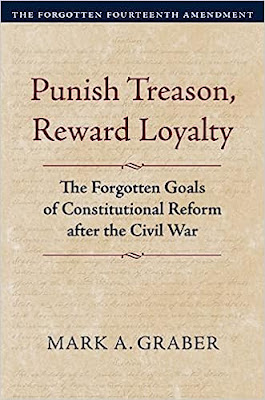
Mark A. Graber, Punish Treason, Reward Loyalty: The Forgotten Goals of Constitutional Reform after the Civil War (University of Kansas Press, 2023)
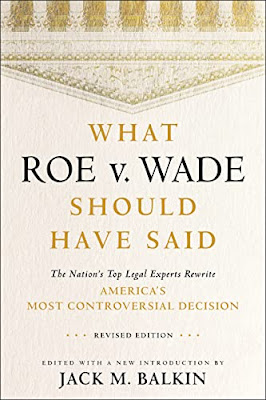
Jack M. Balkin, What Roe v. Wade Should Have Said: The Nation's Top Legal Experts Rewrite America's Most Controversial Decision - Revised Edition (NYU Press, 2023)

Andrew Koppelman, Burning Down the House: How Libertarian Philosophy Was Corrupted by Delusion and Greed (St. Martin’s Press, 2022)

Gerard N. Magliocca, Washington's Heir: The Life of Justice Bushrod Washington (Oxford University Press, 2022)
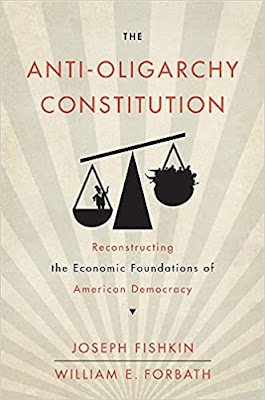
Joseph Fishkin and William E. Forbath, The Anti-Oligarchy Constitution: Reconstructing the Economic Foundations of American Democracy (Harvard University Press, 2022)
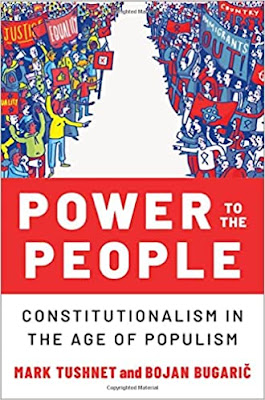
Mark Tushnet and Bojan Bugaric, Power to the People: Constitutionalism in the Age of Populism (Oxford University Press 2021).

Mark Philip Bradley and Mary L. Dudziak, eds., Making the Forever War: Marilyn B. Young on the Culture and Politics of American Militarism Culture and Politics in the Cold War and Beyond (University of Massachusetts Press, 2021).

Jack M. Balkin, What Obergefell v. Hodges Should Have Said: The Nation's Top Legal Experts Rewrite America's Same-Sex Marriage Decision (Yale University Press, 2020)

Frank Pasquale, New Laws of Robotics: Defending Human Expertise in the Age of AI (Belknap Press, 2020)

Jack M. Balkin, The Cycles of Constitutional Time (Oxford University Press, 2020)

Mark Tushnet, Taking Back the Constitution: Activist Judges and the Next Age of American Law (Yale University Press 2020).

Andrew Koppelman, Gay Rights vs. Religious Liberty?: The Unnecessary Conflict (Oxford University Press, 2020)

Ezekiel J Emanuel and Abbe R. Gluck, The Trillion Dollar Revolution: How the Affordable Care Act Transformed Politics, Law, and Health Care in America (PublicAffairs, 2020)

Linda C. McClain, Who's the Bigot?: Learning from Conflicts over Marriage and Civil Rights Law (Oxford University Press, 2020)
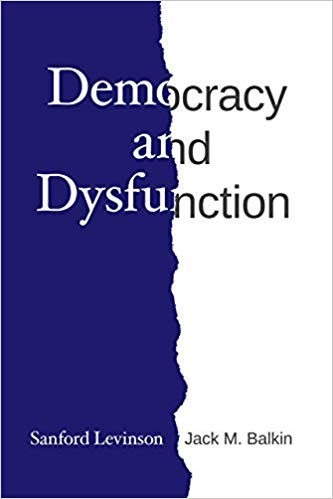
Sanford Levinson and Jack M. Balkin, Democracy and Dysfunction (University of Chicago Press, 2019)

Sanford Levinson, Written in Stone: Public Monuments in Changing Societies (Duke University Press 2018)

Mark A. Graber, Sanford Levinson, and Mark Tushnet, eds., Constitutional Democracy in Crisis? (Oxford University Press 2018)

Gerard Magliocca, The Heart of the Constitution: How the Bill of Rights became the Bill of Rights (Oxford University Press, 2018)

Cynthia Levinson and Sanford Levinson, Fault Lines in the Constitution: The Framers, Their Fights, and the Flaws that Affect Us Today (Peachtree Publishers, 2017)

Brian Z. Tamanaha, A Realistic Theory of Law (Cambridge University Press 2017)

Sanford Levinson, Nullification and Secession in Modern Constitutional Thought (University Press of Kansas 2016)

Sanford Levinson, An Argument Open to All: Reading The Federalist in the 21st Century (Yale University Press 2015)

Stephen M. Griffin, Broken Trust: Dysfunctional Government and Constitutional Reform (University Press of Kansas, 2015)

Frank Pasquale, The Black Box Society: The Secret Algorithms That Control Money and Information (Harvard University Press, 2015)

Bruce Ackerman, We the People, Volume 3: The Civil Rights Revolution (Harvard University Press, 2014)
Balkinization Symposium on We the People, Volume 3: The Civil Rights Revolution

Joseph Fishkin, Bottlenecks: A New Theory of Equal Opportunity (Oxford University Press, 2014)

Mark A. Graber, A New Introduction to American Constitutionalism (Oxford University Press, 2013)

John Mikhail, Elements of Moral Cognition: Rawls' Linguistic Analogy and the Cognitive Science of Moral and Legal Judgment (Cambridge University Press, 2013)

Gerard N. Magliocca, American Founding Son: John Bingham and the Invention of the Fourteenth Amendment (New York University Press, 2013)

Stephen M. Griffin, Long Wars and the Constitution (Harvard University Press, 2013)

Andrew Koppelman, The Tough Luck Constitution and the Assault on Health Care Reform (Oxford University Press, 2013)

James E. Fleming and Linda C. McClain, Ordered Liberty: Rights, Responsibilities, and Virtues (Harvard University Press, 2013)
Balkinization Symposium on Ordered Liberty: Rights, Responsibilities, and Virtues

Andrew Koppelman, Defending American Religious Neutrality (Harvard University Press, 2013)

Brian Z. Tamanaha, Failing Law Schools (University of Chicago Press, 2012)

Sanford Levinson, Framed: America's 51 Constitutions and the Crisis of Governance (Oxford University Press, 2012)

Linda C. McClain and Joanna L. Grossman, Gender Equality: Dimensions of Women's Equal Citizenship (Cambridge University Press, 2012)

Mary Dudziak, War Time: An Idea, Its History, Its Consequences (Oxford University Press, 2012)

Jack M. Balkin, Living Originalism (Harvard University Press, 2011)

Jason Mazzone, Copyfraud and Other Abuses of Intellectual Property Law (Stanford University Press, 2011)

Richard W. Garnett and Andrew Koppelman, First Amendment Stories, (Foundation Press 2011)

Jack M. Balkin, Constitutional Redemption: Political Faith in an Unjust World (Harvard University Press, 2011)

Gerard Magliocca, The Tragedy of William Jennings Bryan: Constitutional Law and the Politics of Backlash (Yale University Press, 2011)

Bernard Harcourt, The Illusion of Free Markets: Punishment and the Myth of Natural Order (Harvard University Press, 2010)

Bruce Ackerman, The Decline and Fall of the American Republic (Harvard University Press, 2010)
Balkinization Symposium on The Decline and Fall of the American Republic

Ian Ayres. Carrots and Sticks: Unlock the Power of Incentives to Get Things Done (Bantam Books, 2010)

Mark Tushnet, Why the Constitution Matters (Yale University Press 2010)
Ian Ayres and Barry Nalebuff: Lifecycle Investing: A New, Safe, and Audacious Way to Improve the Performance of Your Retirement Portfolio (Basic Books, 2010)
.jpg)
Jack M. Balkin, The Laws of Change: I Ching and the Philosophy of Life (2d Edition, Sybil Creek Press 2009)

Brian Z. Tamanaha, Beyond the Formalist-Realist Divide: The Role of Politics in Judging (Princeton University Press 2009)
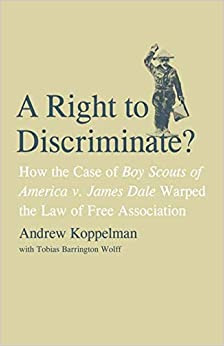
Andrew Koppelman and Tobias Barrington Wolff, A Right to Discriminate?: How the Case of Boy Scouts of America v. James Dale Warped the Law of Free Association (Yale University Press 2009)

Jack M. Balkin and Reva B. Siegel, The Constitution in 2020 (Oxford University Press 2009)
Heather K. Gerken, The Democracy Index: Why Our Election System Is Failing and How to Fix It (Princeton University Press 2009)

Mary Dudziak, Exporting American Dreams: Thurgood Marshall's African Journey (Oxford University Press 2008)

David Luban, Legal Ethics and Human Dignity (Cambridge Univ. Press 2007)

Ian Ayres, Super Crunchers: Why Thinking-By-Numbers is the New Way to be Smart (Bantam 2007)

Jack M. Balkin, James Grimmelmann, Eddan Katz, Nimrod Kozlovski, Shlomit Wagman and Tal Zarsky, eds., Cybercrime: Digital Cops in a Networked Environment (N.Y.U. Press 2007)
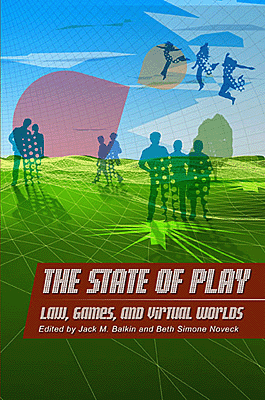
Jack M. Balkin and Beth Simone Noveck, The State of Play: Law, Games, and Virtual Worlds (N.Y.U. Press 2006)

Andrew Koppelman, Same Sex, Different States: When Same-Sex Marriages Cross State Lines (Yale University Press 2006)
Brian Tamanaha, Law as a Means to an End (Cambridge University Press 2006)
Sanford Levinson, Our Undemocratic Constitution (Oxford University Press 2006)
Mark Graber, Dred Scott and the Problem of Constitutional Evil (Cambridge University Press 2006)
Jack M. Balkin, ed., What Roe v. Wade Should Have Said (N.Y.U. Press 2005)
Sanford Levinson, ed., Torture: A Collection (Oxford University Press 2004)
Balkin.com homepage
Bibliography
Conlaw.net
Cultural Software
Writings
Opeds
The Information Society Project
BrownvBoard.com
Useful Links
Syllabi and Exams